StarvingGamer's Games Worth Starving For (or Otherwise) in 2017
By StarvingGamer 21 Comments
Going back through my end-of-year writeup for 2016, I'm struck by two things: 1) despite decades spent meticulously honing my cynicism I was woefully unprepared for the absolute cluster that 2017 would prove to be and 2) as high as I was at the time on 2016's offerings, 2017 is on a whole other level when it comes to top-notch video games. Which isn't to suggest that the year is unassailable. The hand of cosmic irony fell, repeatedly and heavily on the gaming community, throughout 2017. As the world was wracked with controversy, so too were some of the the year's biggest games, with half-baked releases, crassly exploitative monetisation schemes, and problematic content alienating ardent fans and reducing tentpole franchises to cautionary tales. It was a year of upliftingly high highs and crushingly low lows, often times from the same game.
Before you read on know that spoilers abound, and pour one out for games 11-20 on my list that could easily comprise someone else's top 10.
Runners-up: 11. Night in the Woods, 12. Assassin's Creed Origins, 13. NieR:Automata, 14. Hellblade: Senua's Sacrifice, 15. What Remains of Edith Finch, 16. Injustice 2, 17. Uncharted: The Lost Legacy, 18. Mario + Rabbids: Kingdom Battle, 19. Super Mario Odyssey, 20. Gravity Rush 2
Best Old Game
Street Fighter V
For all the flaws of its release and the coverage of its release and the community reactions to its release last year, no other game came close to providing me as many hours of quality entertainment as Street Fighter V. The fighting worked then, and has only continued to get better over the course of 2017.
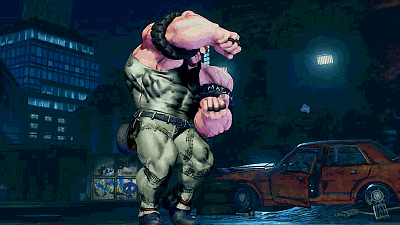
While the year was light on changes to the game's accoutrements, Capcom went for broke when it came to the second season of DLC characters, introducing 5 newcomers to the series instead of falling back on fan favorites. While it's hard to say whether or not it worked for them financially, the artists and designers did a tremendous job creating characters oozing personality in every animation with unique and inventive gameplay styles not before seen in a Street Fighter yet still very in keeping with the feel of the series.
We had the ice queen Kolin who skated effortlessly across the battlefield. There was Ed, that Draco Malfoy-looking motherfucker full of psycho power and 'tude. Abigail, the half-man half-monster-truck that left everyone scratching their heads after his reveal at EVO who has gradually become one of the hypest tournament characters to watch. Everyone's favorite cat-daughter and Rose-by-proxy Menat has produced some of the swaggest combos in the game and continues to ruin the fingers of all but the most adept players. Finally there's Zeku, the twofer who changes age, demeanor, and fighting techniques at will and in one of the stranger lore crossovers in recent history is actually the founder of the Striders organization?
With the hype of the Capcom Pro Tour finals in December and the shocking strength of the Season 3 / Arcade Edition launch trailer giving the game a lot of momentum going into 2018, there has never been a better time to be a fan of Street Fighter. Special limited-time challenges pushed me to reach Super Gold rank in 2017 and with a hopefully-improved F.A.N.G. coming with the next balance update, I may yet climb to new heights. I can't wait to see more of you in the streets in 2018. Prepare to catch some Blanka balls.
¡Somos millonarios!
Runners-up: Final Fantasy XII: The Zodiac Age, Virginia
Best Surprise
Butterfly Soup
I'm gay!
Ok not really, but as someone who has never felt quite comfortable in their gender performance, I have found myself drawn more and more towards queer women in interactive fiction as a way of better understanding myself. This exploration began in 2009 with BioWare's Dragon Age: Origins, which allowed my female avatar to romance a bisexual character of the same gender, but didn't really kick into high-gear until 2015's Life Is Strange, a mashup of middle-class american teen drama, The Butterfly Effect and, depending on how you played it, the protagonist Max Caulfield's journey into discovering her queerness.
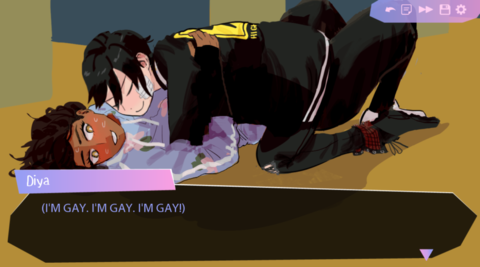
Fast forward to 2017 with its smattering of what I have come to affectionately refer to as "gay girl simulators" that have really pushed me to meditate on what gender means to me both in the way I feel and the ways I'm perceived. It's no coincidence that half of the games in my top 10 prominently feature strong, queer women (Aloy/Vanasha I ship it fight me), and none of those narrative hit me nearly as strongly as Butterfly Soup. Of course Butterfly Soup was playing with a stacked deck, in a way, because all four of its main characters are Asian-American, a minority that is rarely represented in media and almost never with this level of honesty. My own life was a sort of Asian-American-lite, as I like to think of it, as a third-generation American on my dad's side, but many of my friends were first-generation Asian-Americans and it was great to see their experiences and my own mirrored in the narrative.
I love that video games are becoming more and more willing to tell us stories of post-apocalyptic hellscapes, corporate dystopias, and all manner of human folly where, despite our failings as a species, we at least have managed to move beyond the pervasive, closed-minded views on sexuality. For me, though, in this world replete with non-binary phobias, there was some comfort in seeing these girls struggle with coming to terms with their queerness against the 2008 backdrop of the Proposition 8 movement in California. In a way I am these girls. I am Diya who would rather stay silent or avoid social situations entirely, rather than risk misspeaking and breaching a social contract she is convinced she doesn't fully understand. I am Akarsha who relies on the quick wit of puns and memetic humor to distract, diffuse, and deflect difficult issues and ensure that no one takes her seriously enough to get offended by who she really is. I am Noelle who puts on airs of academic aloofness because it is much easier to be right when dealing with facts and reason than it is to argue a battle of emotions. I'm not Min though, sorry. My shortness that lasted through middle school never pushed me overcompensate with arrogance and violence.
(Except I'm also gay!)
Proposition 8 was an amendment to the California constitution that provided that the state would only recognize marriage between a man and a woman. It passed in 2008 and was not completely overturned until the end of appeals in 2013.
Runners-up: Assassin's Creed: Origins, Hellblade: Senua's Sacrifice
Biggest Disappointment
Tekken 7: Fated Retribution
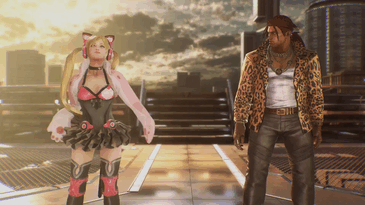
Ah yes, Tekken 7. A game that has been tournament-playable since 2015 but did not see an actual console release until 2017. A game whose director, Katsuhiro Harada, deflected questions about its prolonged development by directly and indirectly throwing Street Fighter V under the bus for its lackluster release. A game that had years to focus on its console features, only to release with featureless and barely-functioning lobbies, best-of-2 (?) ranked matches, character customization options locked behind a boringly simplistic RNG treasure battle mode, and an utter lack of anything remotely resembling a tutorial. Top it all off with the worst fighting game cinematic story mode since those became a thing with Mortal Kombat 9, where you only see a small fraction of the cast, spend half your time listening to monotonous line reads of meandering dialogue over still images, and slog through boss fights that follow the old-school design of being frustratingly difficult in mechanics-breaking ways.
Let me take a second and acknowledge that at its core, Tekken 7 is still good at being Tekken. It's been Tekken for 23 years and if you're playing next to another human, it continues to be mostly Tekken. If you liked pushing 112 and 122 with Kazuya in 1994 you'll definitely find a refined version of that here. The addition of final-hit slow-mo is undeniably hype and as divisive as they may be, the new Rage Art mechanic was an effective way to help lapsed players feel like they can jump in and immediately be doing something cool.
Tekken 7 has a strong following, both in the Giantbomb FGC Discord and across the broader FGC as a whole, and I bear no ill will towards anyone who genuinely enjoys the game. For me, however, I don't know that I'll ever be able to watch it being played without picturing those images of Harada proudly wearing his "Don't ask me for shit" t-shirt, remembering the mess that Tekken 7 was at release, and realizing that he got away with it, stoking the flames of the Capcom hate-bandwagon merrily all the way.
Runners-up: Doki Doki Literature Club, NieR:Automata
Best New Character
Pelessaria B'Sayle (PeeBee) - Mass Effect: Andromeda
Fight me!
Ok, no, but hear me out at least. Yes, Mass Effect: Andromeda is a game plagued by issues that exhausted most people's patience for the game. Yes, PeeBee may not be the most nuanced take on well-worn character tropes of the enigmatic, effervescent, adventurous, and commitment-averse companion. Yes, she holds her gun backwards in a cutscene (did they ever fix that?). That doesn't change the fact that she was the single character that had the greatest impact on my experience with a game this year.
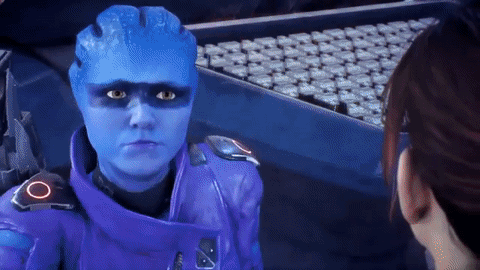
Whenever I undertake an RPG in the BioWare style with their heavy focus on dialogue choices, I always have a clear idea of the character I plan on playing the role of. For the original Mass Effect trilogy this became incredibly straightforward, as the binary nature of the Paragon/Renegade system made it feel more like a game telling two clear, canonical stories, rather than an open-ended experience of player authorship. Since then they've gradually eased back on that design philosophy, loosening the reigns with each subsequent release.
In Mass Effect: Andromeda, any hints of scorekeeping are gone and the player is free to make dialogue choices as real people do, in the moment according to how they feel at the time. This is the first game in a long time to make me feel like my character was wholly my own, and that's where PeeBee comes in. Taking a few early cues from the characters in the world, I quickly came to realize that my Sara Ryder was a by-the-book professional, pushing aside personal entanglements and coming to terms with truly being her father's daughter. As my Ryder came to learn more about the secrets her father kept and his secret motivations, I felt her grip on the persona she had crafted for herself beginning to slip, but it was PeeBee who finally pushed her over the edge.
PeeBee, with her incessant prattling, her distracted excitability, her shirking of all things protocol and convention, finally wore my Ryder down and got her to loosen up. Whereas in a previous game, I would have kept highlighting the dialogue choice denoted as "professional" from beginning to end (to maximize my Professional Points™, you see), in Andromeda I suddenly found my Ryder becoming more and more willing to break the rules and trust her instincts over her training. For the first half of the game, my Ryder didn't even like PeeBee but here I was, dozens of hours in, mind racing over PeeBee confessing her feelings for my Ryder. It's almost universally a given that by spending time with the main character, the companions in BioWare games experience meaningful personal growth. In that moment I realized that for the first time, one of my companions was having that same effect on me.
I have always made an effort to play through BioWare games multiple times. I ran through the entire Mass Effect trilogy as both Paragon and Renegade and have numerous characters created for every entry in the Dragon Age series. Andromeda is the first time I don't want to go back, and not because I didn't enjoy the game. I had enormous fun playing it from start to finish. But my experience with Ryder and PeeBee was so singularly my own, I don't know that I can bear to go back and do things differently. Those two found each other and made each other better, and even if BioWare never lets me come back to these characters and the Andromeda galaxy, I think I can be satisfied with that.
Runners-up: Akarsha - Butterfly Soup, Aloy - Horizon: Zero Dawn
Best Moment or Sequence
Traveling to the Houseboat Fleet - Gravity Rush 2
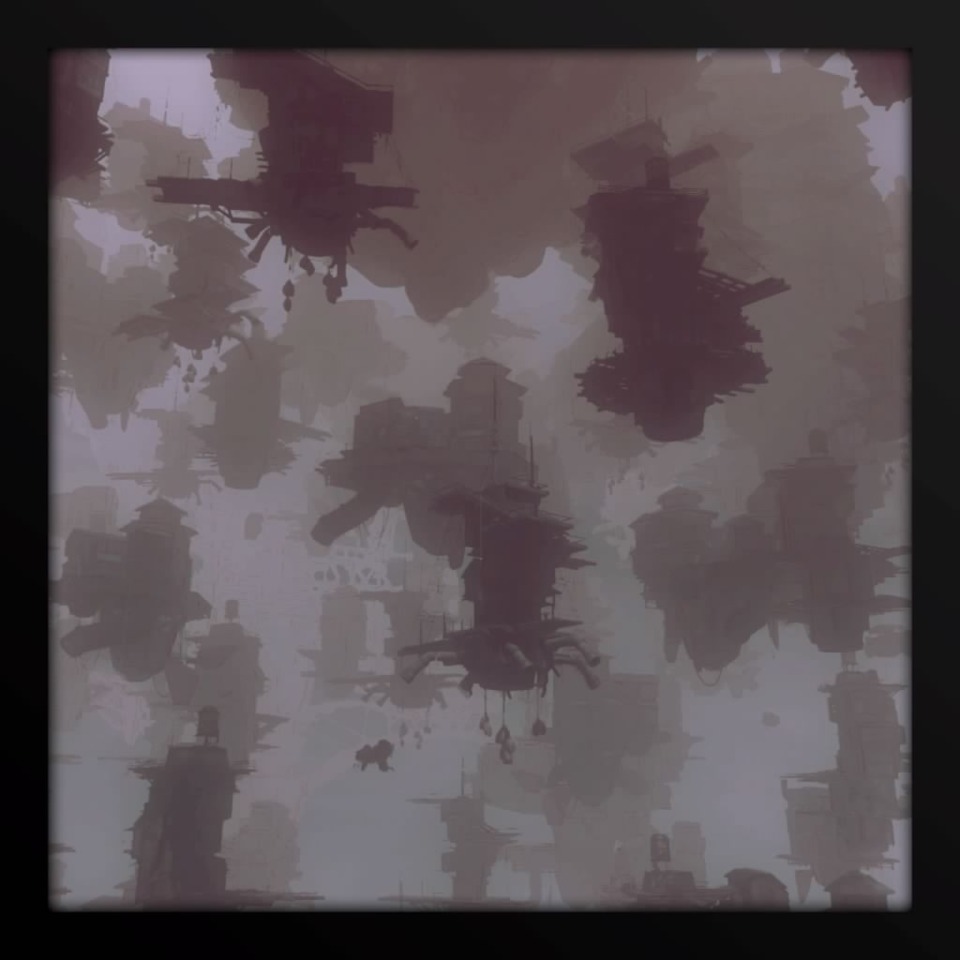
Most video game characters pull from a common vocabulary of movement. We know that Mario jumps and Sonic runs, Nathan Drake climbs and Solid Snake crawls, but Kat from Gravity Rush 2's talent is falling. Kat is a gravity shifter, meaning she has the power to ignore gravity's effects and, more importantly, freely change the direction of gravity's pull on her body. If she decides that gravity is above her, she can fly by "falling" up into the sky.
This mechanic allowed Gravity Rush 2's world designers to create a vertical space on a scale unlike any other game. Instead of running across wide open fields, for the first half of the game Kat finds herself exploring the floating islands that make up the tiered city of Jirga Para Lhao.
Kat first touches down in a section of the city called Lei Colmosna, a bright and colorful area resembling a sort of island resort town, with clear blue skies above and an ocean of fluffy white clouds below. Beyond the palm trees she can see the next level of islands, crowned with towering skyscrapers that make up the city's downtown district. Higher still is Lei Havina, a collection of island-sized mansions that house each of Jirga Para Lhao's elite families.
Kat spends a great deal of time in the city, reveling in its sights and smells, lending a hand where she can and doing her best to repay the kindness of the people that took her in. It is only later, while investigating the theft of some cargo, that she first discovers the existence of another district, Lei Elgona, hidden somewhere beneath the clouds. So Kat does what she does best. She falls, and she falls, and she falls, and she falls. As a gravity shifter, Kat is always moving herself at terminal velocity. So when Kat pierced the cloud layer in search of Lei Elgona, the space around her growing darker and darker the more she plummeted, there was a growing sense of unease as I began to realize just how far these people were separated from the rest of Jirga Para Lhao's society. It was a kick in the gut for me when Kat finally broke through and saw, far below, a shanty town built atop rusty floating housboats, cast in unrelenting darkness, its unsightly mass kept buried beneath the clouds.
One of the special things that only video games can achieve, the marriage of game mechanics and narrative, makes a story's themes tangible in a way no other medium can provide. It is one thing to acknowledge and understand social inequality and systemic injustice. It is another thing to be able to hold it in your hands. In that moment that is what Gravity Rush 2 allowed me to experience. Sometimes the only choice you have is to fall and keep falling.
Runners-up: The Tempest - Life Is Strange: Before the Storm, Kick It - Wolfenstein II: The New Colossus
StarvingGamer's Top 10 Games of 2017
10. Tacoma
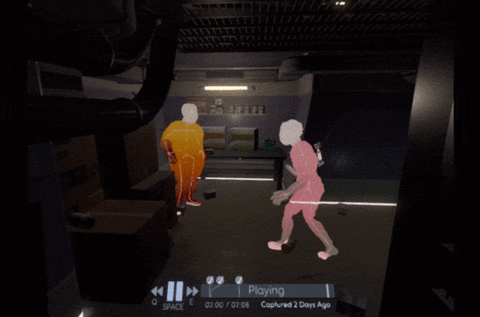
I was a huge fan of Gone Home the year it came out, and have only grown more and more fond of games in the affectionately (and derisively) named "walking simulator" genre ever since. However, in early 2016, it seemed like the game's developer, Fullbright, was headed for a sophomore slump when they announced that after more than two years of work, they were going back to the drawing board for their followup Tacoma. At the time, it was shaping up to be too much like "Gone Home: In Space". Thankfully they took the step back.
Tacoma puts the player in the role of a contractor investigating an abandoned space station by watching recordings of the crew's final days on board. Unlike the static environments of Gone Home, these recordings project silhouettes of the crew into the various rooms as augmented reality videos. Taking full advantage of the setting and medium, players can scrub forwards and backwards through the footage, following the various members of the crew as the move into and out of each other's company and conversations. The scenes are well written, not only with believable dialogue but also with cleverly distributed hints that gradually fill in the broader picture of the world and clue us in to the unique societal pressures the characters are suffering under in this corporate dystopia.
Fullbright has managed not once, but twice, to grant me a narrative experience that will always stay with me, not only on the strength of its writing, plot, and themes, but for the innovative ways in which that narrative is delivered.
9. Prey
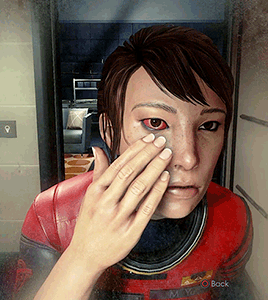
The promise of the immersive sim, games emphasizing player immersion by placing them in a living, breathing spaces and focusing on choice and consequences, has called to me since Deus Ex was released in 2000. I have always been eager for new entries in the genre, and with two key design decisions, Prey is the closest game yet to realizing that potential.
Prey puts the player inside the head of Morgan Yu, an amnesiac scientist who wakes up and finds herself aboard the orbital space station Talos I where she (wait for it) needs to investigate the fate of the crew and the cause of the alien infestation runs throughout its entirety. By setting the entire game in a single, contiguous space, I was able to gain a deeper connection to Morgan and her world than I have with any previous immersive sim. There were no fades to black or "time passes" as I traveled from location to location. If Morgan ended up somewhere, it was because I moved her there. And by spending all of my time with the game on Talos I, I developed a familiarity with the area around me that made it feel like home.
As Morgan comes to understand the nature of her work on the station, she is faced with a choice. By taking advantage of her experiments with alien biology, she can alter her own body either by maximizing her human potential or by gaining extraordinary alien powers. Unlike most games in the genre, this presented a clear narrative divide. Would I give up my humanity to gain access to abilities that would open up the world to me in ways unattainable by human skill and ingenuity? In the end I went fully human which not only influenced every decision I made for the remainder of the game, but paid off spectacularly when the final twist was revealed.
Some people are suggesting that the immersive sim genre may be dead, or at least headed for a hiatus, on the back of Prey, and Dishonored 2 before it, underperforming in terms of sales. I don't know if I believe that's true, but if it does bear out, my only hope is that when they make their inevitable return, the developers of the next big immersive sim takes some of the lessons of Prey to heart.
8. Splatoon 2
There are several reasons why I skipped on the original Splatoon. For one, I'm not a big fan of dual-analog controls for shooters. Also, at the time, I wasn't a very big fan of the WiiU in general. Beyond that, team-based multiplayer has never been my thing, and prerelease coverage left me with the impression that the game had paltry single-player content to offer. All that being said, there was something about the game's sense of style that called to me, as again and again I had to push myself to not give in and impulse buy the game every time I was at Target or passing by a GameStop.
With Splatoon 2 I finally caved, and I'm glad that I did. Which isn't to say I was wrong to duck the first game for two years. Having played the sequel, I'm sure that I would not have had nearly as much fun with game on the WiiU. But there's something about playing on the Switch, being able to take the game anywhere in my house and curl up and rattle off a quick match or two, that keeps me coming back. I'm enamored with the playful edginess of the game's aesthetic, the movement and shooting mechanics are well suited for analog controls, and it didn't take me long to find a favorite firearm among the varied arsenal.
Now if only team Marina could win a Splatfest and do our octoling idol proud!
I am equal parts adorable and effective #Splatoon2 #NintendoSwitch pic.twitter.com/WZVuLgMqFR
— The Starving Gamer (@StarvingGamer) July 25, 2017
7. Life Is Strange: Before the Storm
I almost didn't play this game.
As someone who is big on workers' rights I was solidly in the corner of the SAG-AFTRA voice actors in their strike against several major publishers in order to receive fairer compensation, more reasonable working conditions, and greater transparency during the hiring process. Imagine my disappointment when I learned that Square Enix was moving ahead with development of Before the Storm and hiring a non-union voice actor to take over the role of Chloe Price, a central character of Life Is Strange and the protagonist of this new prequel.
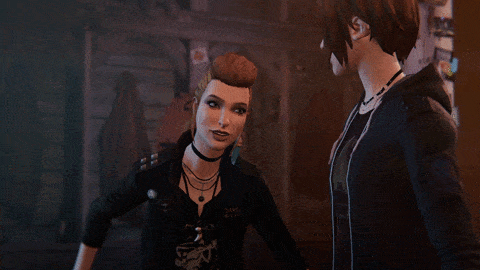
There's a lot to be said about problematic media. As I look at the various Blu-rays I own it's hard to find a movie that wasn't touched in some way by a shitty person or organization that ended up profiting from my purchase. Would I punish the developer, Deck Nine, by not playing their game? Would I punish myself by not experiencing the latest entry in one of my favorite genres and the followup to one of my favorite games? Ultimately, the effusive praise being heaped upon the game from a number of queer women games writers whose opinions I trust won me over.
I've already gone over why Life Is Strange was so important to me in 2015, and while Before the Storm did not have as significant an impact on me, it is in almost all respects a much better story. By ditching the sci-fi A-plot, the writers were able to explore the teen drama and burgeoning romance between Chloe and Rachel Amber in a much more well-developed way. There was a real glee in filling Chloe's furious-at-the-world shoes and playing outside of my comfort zone, pushing back fiercely against the symbols of authority and oppression in her life, from the school principal to her mom's new boyfriend to Rachel's shitty, lying dad.
Before the Storm does what all good supplemental narratives should do. It stands on its own, adds to the world in meaningful ways, and recontextualizes the events of what came before it. I have written a lot about the pivotal decision at the end of Life Is Strange, and only feel stronger in the choice I made at the time. If you enjoyed the first game in any way, I beseech you to give this prequel a chance. Just brace yourself for the post-credits stinger at the end of Episode 3. It's a real knife to the heart.
6. Wolfenstein II: The New Colossus
It's crazy realizing that we live in a world where an over-the-top anti-fascist Nazi-murder-simulator would be considered by large swathes of the gaming community to be much-needed catharsis, and by others as too politically controversial a product to purchase. Any other year Wolfenstein II would have been a middling-to-average shooter campaign peppered with well-directed cutscenes. In the context of today, however, Wolfenstein II provides some of the most relevant and biting social commentary ever to grace a big-budget video game.
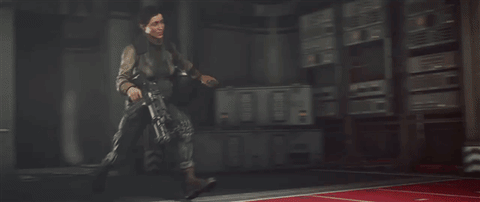
By in large, New Colossus does little to evolve beyond 2014's Wolfenstein: The New Order in terms of its gunplay and level design. Stealth is still largely impossible to execute on unless you are willing to rely heavily on repeatedly saving and reloading your progress. Firefights often draw on too long and it's easy to go from doing well to suddenly overwhelmed and dead. I still largely enjoyed the time I spent actually playing the game, especially once I got access to weapon upgrades and was able to attach a silencer to my pistol, but it was the the themes and overall quality of the narrative interludes that pushed me onward.
Maybe it's the nature of the genre but there's a certain way the game drives straight to the heart of everything it has to say. Every cutscene is packed with hard cuts and punchy dialogue. The game gives zero fucks and readily calls out America's history of systemic racism and white complacency. A social democrat and the game's army vet hero B.J. Blazkowicz have a shouting match about whether the right or the left is to blame for America losing the war, all against a backdrop of sniper fire and jazz clarinet. A paranoid and decrepit fuhrer murders people randomly and indiscriminately while soiling himself, and none of his underlings even entertain the notion of tempering his madness. A pair of stormtroopers share a "so much for the tolerant left" moment before talking about signing up for the death squads. An axe is buried in the face of Nazi military might and broadcast across the nation during late-night television. A random newpaper clipping satirizing modern media's farcical coverage of America's most punchable racist, Richard Spencer.
For a game that the developer claimed was not a reflection of the current political climate, it's hard to see anything but in the fabric of Wolfenstein II. Yes, it is in part a product of happenstance, but the messages and themes could not be more relevant to living in modern-day America. There is so much uncertainty going in to 2018, both for America and the world, and with things more likely to get worse before they get better, I'm thankful for the little bits of hope that stories like these can give us.
5. Persona 5
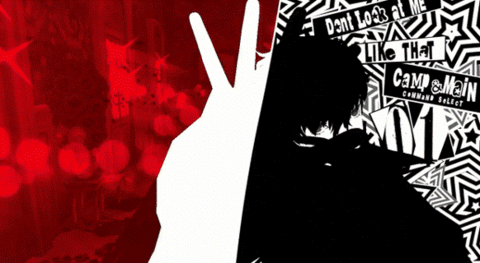
If there's one thing the Persona games have always excelled at, it's their sense of style. From their characters to their art direction to their music to their menu design, a Persona game's aesthetic is pervasive, and Persona 5 is the ultimate realization of that design ethos.
Persona 5 is in every way a step-up from its predecessor. The core loop of gameplay remains largely unchanged, but tightened up and tweaked in numerous ways to help players maximize their time and more quickly navigate the world. Adjustments to the battle system add several layers of tactical depth to every encounter. Characters in the world that the player can build relationships with have deeper stories and offer significant mechanical benefits the more they're pursued. The game even takes advantage of the always-connected nature of modern consoles, allowing stumped players to ask the internet what decisions other players made in various situations.
Unfortunately the game has its share of stumbles, from its weird objectification of one of it's female protagonists, to the continued Atlus tradition of inserting transphobic and homophobic humor, and the fact that the ~16-year-old hero has the option to romance a number of adult women in their 20s, including his own homeroom teacher. These are relatively small blips across a game that can easily last a player 100 hours, but they also hold Persona 5 back from been an unequivocal success and higher on my personal list.
That music though...
4. Butterfly Soup
It is both remarkable and not at all surprising that 23-year-old Brianna Lei was able to write her queer Asian-American teen romance story with so much authenticity. The dialogue is funny and genuinely warm in ways that many games strive for but never quite reach. I'd write more about the game but it's short, sweet, and most importantly free so if possible, I'd much rather more people go out there and download it and experience it for themselves. In the meantime I'll sit here feverishly hungering for Butterfly Soup 2, and whatever else Brianna is working on next.
Download here: https://brianna-lei.itch.io/butterfly-soup
3. Horizon: Zero Dawn
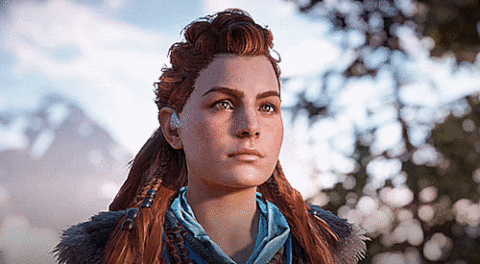
First, I'd like to acknowledge that when your story is set during the reemergence of humanity 1000 years after a technological apocalypse, there's something callously appropriative about basing your fictional future society on Indigenous American culture.
That being said, Horizon: Zero Dawn is one of my best experiences playing a game, bar none. The developers at Guerrilla built an amazingly well-realized world, with mysteries and reveals that constantly took my breath away across the entirety of its narrative. I never once grew tired of hunting elaborately designed robotic animals across the lush landscapes grown on top of the ruins of modern civilization, learning their strengths and weaknesses and carefully choosing from my wide arsenal of weapons in order to bring them down efficiently and strip their of their valuable components. The combat of Horizon not only surpasses the breadth of games that are tied to the open-world genre, it could give the best action games a run for their money.
Then there's Aloy, the game's hero. She is at once headstrong and humble, tragic and triumphant, intuitive and naive. Not only is she well written, she is deftly acted by Ashly Burch, all fire and spittle when facing down the most intimidating foes, and full of awkward obliviousness as she is relentlessly flirted at by a majority of the people she meets in her travels across what remains of Colorado. She is the child of our generation, the ultimate inheritor of the sins we inflicted against the world, and I can't help myself but revel in her triumph.
2. Mass Effect: Andromeda

I look back on my experiences with Mass Effect: Andromeda and consider myself lucky.
I have always had a high tolerance for sloppy animations, bad geometry, and all the bits of jank that are common in larger, open-world RPGs. And while the prevalence of those things did not seem particularly higher in Andromeda than, say, Fallout 4, I acknowledge that I simply may not have been bothered enough by all the little imperfections to have them register. For all the reports of the game being a buggy mess, I also seem to have dodged the bulk of it. I only hit one progression bug on a side-quest that I wasn't able to finagle my way around, and could count the number of times I lost progress due to a scripting error on the hands of a blind butcher. So unlike most folk, I was able to enjoy the best shooting in the franchise, backed up by the breadth of power combinations allowed by an open-ended class system and a wide array of weapons catering to every playstyle.
Most importantly, though, I was able to inhabit the role of the Pathfinder, and it's this key distinction that elevates Andromeda above the original trilogy for me. In the first three Mass Effects the player takes on the role of Shepard, the first human Spectre. As as Spectre, Shepard was one of the Milky Way Galaxy's top shadow cops, with the freedom to act covertly and unilaterally. She was rarely called to task for her actions outside of toothless admonishments from her closest companions and the occasional dressing down from members of the Citadel Council who all seemed to keep dying and being replaced. Everyday people recognized that she was important and dangerous, but rarely recognized her for her deeds, allowing her to act with a very detached ethos, no more dedicated to the greater good as she cared to be.

Sara Ryder's responsibilities as Pathfinder put her in a very different position. Suddenly finding herself the symbolic figurehead of the colonization efforts in the Andromeda galaxy, every single one of her actions, not matter how small, was public knowledge. Every decision, from sentencing a would-be mutineer who attempted to murder his commanding officer and failed, to deciding whether the first planetside outpost would be dedicated to the military or scientific research, would be scrutinized by the entire Andromeda Initiative. Ryder was connected to the people in a way Shepard never was, and regularly had to come face-to-face with the consequences for her actions.
A lot of people have written and talked about this year's Assassins Creed Origins and the appeal of its central character, Bayek. As one of the last medjay in Egypt at the end of Ptolemaic rule, Bayek embraces his role as protector. Seeing the depth of compassion in his interactions with his fellow Egyptians and the lengths to which he would go to help them spoke greatly to many people. That is what the Pathfinder means to me, not the distant Spectre enforcer, but the ardent protector standing alongside her people against the frightening unknown.
1. Marvel vs. Capcom: Infinite
I have known that Marvel vs. Capcom: Infinite (MvCI) was my 2017 Game of the Year since it was announced at Sony's Playstation Experience last December. I have had a full year, including three months of play time, to figure out how to articulate what makes MvCI the ultimate realization of my favorite elements of fighting games. I have written and deleted various analogies to music and theater and dance but what I think I really want to talk about is painting.
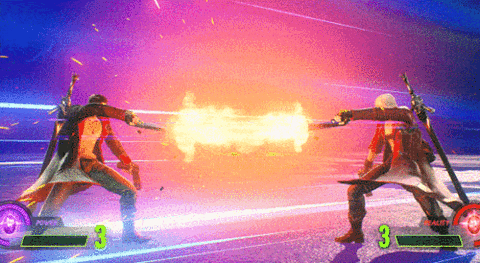
My other favorite fighting game, Street Fighter V, has what I think of as a connect-the-dots appeal. There's a sort of rigid ease of use that most Street Fighter characters have, which is great because when I just want to get in and play with someone else, I can focus on connecting the dots and even with minimal practice and effort, I'm at least guaranteed to get a crude picture out of it. The flip side of this is that no matter how much I dedicate my time to coloring in the shapes, adding details, contouring the lines, making things look nice, I'm ultimately still connecting the dots.
MvCI follows in a tradition of team-based fighting games where the player builds a team of multiple characters, with one active on-screen at a time. Unlike previous games of this style that have more restrictive rules about where, when, and how a player can call upon the characters they have waiting in the wings, MvCI features a flexible switch mechanic that allows players to freely call in their secondary character in a majority of the possible gameplay situations.
Thanks to this mechanic, I now see MvCI as more of a blank canvas, with the characters I choose determining the colors I have at my disposal. Admittedly, I'm not a very good artist. I can't take my paints into a pressure situation and produce a Monet. What I can do, however, is use my practice canvas in training mode to experiment with the colors at my disposal. I can take my greens and browns and work hard until I get really good at painting a nice tree that I can show you the next time I face you online. And even when I run into other people that have the same paints as me I can bet that more often than not, the tree I came up with will look pretty different from the tree they're painting. Or maybe they painted a pool table, or a frog, or a kiwi.
It is this freedom of expression that MvCI grants me access to through its unique mechanics that elevates it so high in my heart. I take inspiration from the masters of the game as I watch them create new masterpieces with every tournament they enter, and I keep practicing painting my tree until I can get it mostly right most of the time. I just wish more people could be convinced to give these paints a try.
Optimization train keeps on chugging #mvci #PS4sharehttps://t.co/YdzvkxI7WX pic.twitter.com/pOJkFupWXT
— The Starving Gamer (@StarvingGamer) October 24, 2017
Thanks for sticking with me and as always, be sure to check out our Fighting Games General thread on the forums and join the GiantBomb Fighting Game Community Discord if you're so inclined. Here's to kicking ass and not going 0-2 in 2018!
